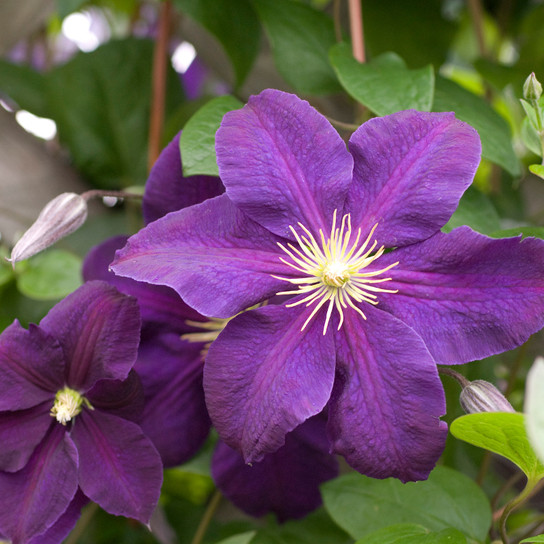
Light Needs

Mature Height

Mature Spread

Growing Zones
Clematis Jackmanii is one of the most well known clematis varieties. It was introduced in 1862 and the first late large-flowered hybrid clematis available to gardeners. The violet-purple flowering vine was named after the nurseryman George Jackman. Mr Jackman created the clematis hybrid by crossing it between clematis lanuginosa, clematis viticella, and clematis × hendersonii in 1858.
The dependable and hardy Jackmanii is still grown today as one of the most popular varieties in the United States. Jackmanii Superba Clematis is a newer improved version of the original Jackmanii, and has been bred for more attractive flower petals that are a deeper purple color than the original. The flowers will change from deep purple to a lighter lavender or violet color as the flowers get older.
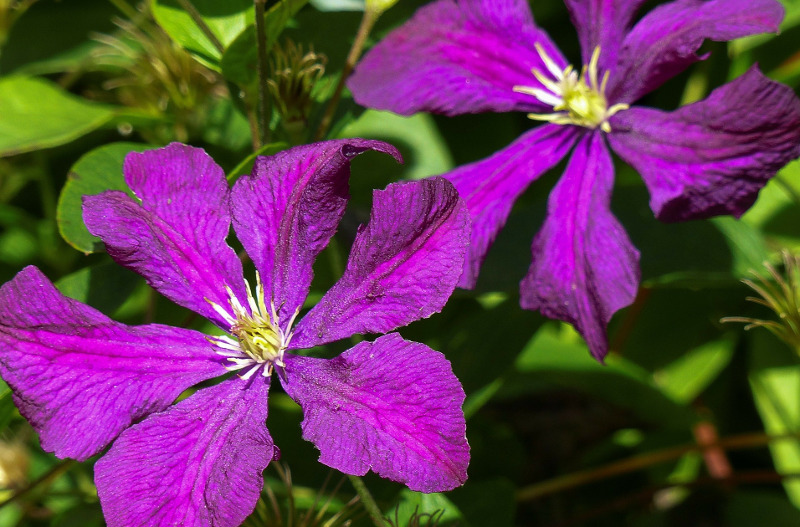
Jackmanii Superba vs Jackmanii
Jackmanii Superba is considered an improved version over the original. This new plant has more profuse blooms and the flowers are slightly larger as well. We recommend growing the improved Superba variety over the traditional original jackmanii clematis. Or you can grow both for a classic vine mixed with the new and improved version!
Jackmanii Superba Clematis Care
Caring for purple clematis jackmanii is extremely easy once established. The hardest part is getting the new plants established and the roots growing strong. This plant grows rapidly and does best in full sunlight locations that get at least 6 hours of direct sunlight. Try and choose a location where the “heads in the sun, feet in the shade”. Which means, the plant does best if the vines get direct sunlight, but the base of the plant is protected by some shade throughout the day.
The plants require well draining soil and hate wet feet, which can cause root rot and the plant to die if severe enough. We also recommend adding a layer of mulch at the base of the plant to help protect the roots and retain moisture.
Clematis Jackmanii bloom time goes from early summer and will rebloom throughout the fall until the first frost. In late fall, the flowers change to small, dry seed heads with silky tails.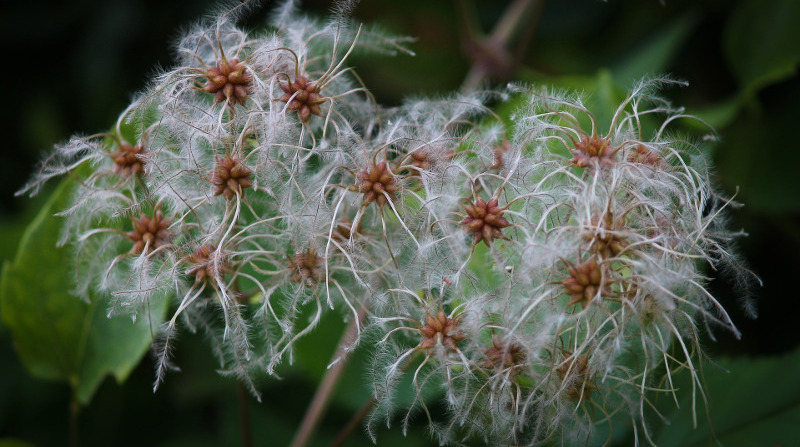
We recommend providing support for clematis to grow on. It can be left to sprawl as a groundcover, but that is more difficult to do and harder to keep the plant healthy. The plants will grow by twining the leaves on any nearby support like walls, trees, shrubs, mailboxes or fences. The most common support is proving a metal or wooden trellis for the plant to climb on.
Pruning Jackmanii Superba Clematis
Clematis Jackmanii are considered a group 3 clematis, which means the vine blooms on new wood, and the plants can be cut back hard in the late winter or early spring to within 6 inches of the ground. This is a fantastic way to clear out old growth and start fresh every year. The plant can climb up the old growth if you leave it, which can provide additional support if you choose not to trim the plant back.
Fertilizing Jackmanii Superba Clematis
If you choose to fertilize jackmanii, use a balanced slow release fertilizer. Apply in spring, summer and fall if you wish. Keep in mind these plants prefer neutral soil. So an easy alternative to fertilizing is by adding high quality compost around the base each year, which will help maintain a healthy balance of nutrients. You can also get the soil tested if the plant is not looking healthy, to see if what needs to be added to the soil.
Jackmanii Superba Clematis Plant Facts
| USDA Hardiness Zones: 4-8 |
| Flower Color(s): Violet Purple |
| Bloom Period: Summer to Fall |
| Foliage Color(s): Green |
| Exposure: Partial Shade to Full Sun |
| Height: 7-10 Feet Tall |
| Spread: 3-6 Feet Wide |
| Spacing: 3 Feet Center on Center |
| Habit: Climbing Vine |
| Blooms On: New Wood |
| Watering: Average |
| Soil: Well-Drained |
| Soil pH: Neutral |
| Shrub Type: Deciduous |
| Scientific Name: Clematis x ‘Jackmanii Superba’ |
| Higher Classification: Leather Flower |
| Rank: Hybrid |
| Hybrid Parentage: C. lanuginosa × C. viticella |
| Cultivar Group: Clematis Viticella |
| Species: C. × jackmanii |
| Common Names: Clematis Jackmanii, Jackman Virgin's Bower, Jackman's Clematis |
Simple Plant Spacing Calculator
Please Note: The pictures below are to give a general representation of the different container sizes. The actual size/ages of plants are estimates and will vary based on type of plant, time of year, last pruning & many other factors.
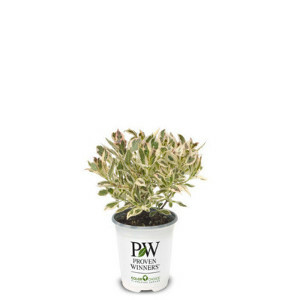
Also Known As:
Quart
Plant Age:
~ 6 months - 1 year
Plant Size:
~ 4"-8"
Pot Size:
~ 4.75"H x 4.5"W
Volume:
1.50 quarts
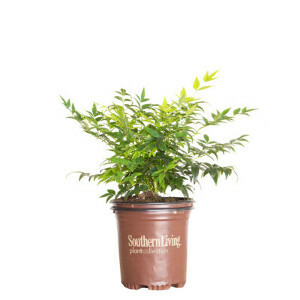
Also Known As:
2.5 Quart Pot
Plant Age:
~ 1 - 2 years old
Plant Size:
~ 8"-12"
Pot Size:
~ 6.5"H x 6.5"W
Volume:
2.20-2.30 quarts
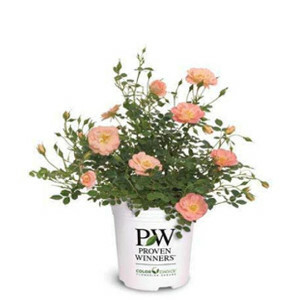
Also Known As:
#1 Container
1 Gallon
Plant Age:
~ 1 - 2 years old
Plant Size:
~ 10"-14"
Pot Size:
~ 7"H x 7.75"W
Volume:
2.26-3.73 quarts
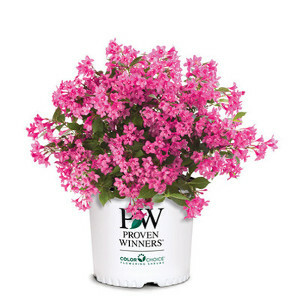
Also Known As:
#2 Container
2 Gallon
Plant Age:
~ 1.5 - 3 years old
Plant Size:
~ 12"-18"
Pot Size:
~ 9.5"H x 9.5"W
Volume:
1.19-1.76 gallons
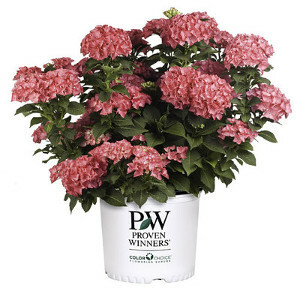
Also Known As:
#3 Container
3 Gallon
Plant Age:
~ 2 - 4 years old
Plant Size:
~ 12"-30"
Pot Size:
~9.5"H x 11"W
Volume:
2.32-2.76 gallons

Also Known As:
#5 Container
5 Gallon
Plant Age:
~3-4 years old
Plant Size:
~ 20" - 60"
Pot Size:
~11" H x 10 1/2” W
Volume:
3.5 - 4 gallons

We stand behind our plants with industry-leading guarantees to give you peace of mind.
We want your plants to arrive in great condition! If you notice any issues upon delivery, contact us within 3 days.
Starting January 1, 2026 all bushes, perennials & trees purchased come with an extended 1-year warranty for added confidence. If your plant dies due to a health issue within a year, we’ll make it right.

Pre-ordered plants are scheduled to ship in Spring 2026. We carefully plan our shipping dates based on your USDA Plant Hardiness Zone to ensure optimal planting conditions upon arrival. Want it sooner/later? Reach out, and we'll try our best to accommodate.
Estimated ship week for pre-ordered plants will ship based on growing zones as shown below.
| Growing Zone | Estimated Ship Week |
|---|---|
| Zone 10 | March 30th |
| Zone 9 | March 30th |
| Zone 8 | April 6th |
| Zone 7 | April 13th |
| Zone 6b | April 20st |
| Zone 6a | April 27th |
| Zone 5b | May 4th |
| Zone 5a | May 11th |
| Zone 4 | May 18th |
| Zone 3 | May 25th |
Note: These are only estimated ship dates. Plants may ship out later depending on weather & growing conditions of the plant.
Note: Only plants indicated as pre-order will ship as shown above. All other plants and hard goods will ship as normal.
Plants that are currently in stock typically ship within 2-7 business days after your order is placed.
Plant Addicts ships to the lower 48 states within the U.S. Unfortunately, we do not currently ship to Alaska, Hawaii, or internationally.
This plant cannot be shipped to the following states: AK, HI. These restrictions apply only to this specific plant due to agricultural regulations or other limitations. Other plants may still be available for shipping to these states.
If you have any questions about shipping restrictions, feel free to reach out to our team!

